机器学习入门实验——以图搜图( 基于vgg网络和Keras深度学习框架)
Posted 代码骑士
tags:
篇首语:本文由小常识网(cha138.com)小编为大家整理,主要介绍了机器学习入门实验——以图搜图( 基于vgg网络和Keras深度学习框架)相关的知识,希望对你有一定的参考价值。
目录
前言:
基于vgg网络和Keras深度学习框架的以图搜图功能实现。
一、实验要求:
给出一张图像后,在整个数据集中(至少100个样本)找到与这张图像相似的图像(至少5张),并把图像有顺序的展示。
二、环境配置:
解释器:python3.10
编译器:Pycharm
必用配置包:
numpy、h5py、matplotlib、keras、pillow
三、代码文件:
1、vgg.py
# -*- coding: utf-8 -*-
import numpy as np
from numpy import linalg as LA
from keras.applications.vgg16 import VGG16
from keras.preprocessing import image
from keras.applications.vgg16 import preprocess_input as preprocess_input_vgg
class VGGNet:
def __init__(self):
self.input_shape = (224, 224, 3)
self.weight = 'imagenet'
self.pooling = 'max'
self.model_vgg = VGG16(weights = self.weight, input_shape = (self.input_shape[0], self.input_shape[1], self.input_shape[2]), pooling = self.pooling, include_top = False)
self.model_vgg.predict(np.zeros((1, 224, 224 , 3)))
#提取vgg16最后一层卷积特征
def vgg_extract_feat(self, img_path):
img = image.load_img(img_path, target_size=(self.input_shape[0], self.input_shape[1]))
img = image.img_to_array(img)
img = np.expand_dims(img, axis=0)
img = preprocess_input_vgg(img)
feat = self.model_vgg.predict(img)
# print(feat.shape)
norm_feat = feat[0]/LA.norm(feat[0])
return norm_feat2、index.py
# -*- coding: utf-8 -*-
import os
import h5py
import numpy as np
import argparse
from vgg import VGGNet
def get_imlist(path):
return [os.path.join(path, f) for f in os.listdir(path) if f.endswith('.jpg')]
if __name__ == "__main__":
database = r'D:\\pythonProject5\\flower_roses'
index = 'vgg_featureCNN.h5'
img_list = get_imlist(database)
print(" feature extraction starts")
feats = []
names = []
model = VGGNet()
for i, img_path in enumerate(img_list):
norm_feat = model.vgg_extract_feat(img_path) # 修改此处改变提取特征的网络
img_name = os.path.split(img_path)[1]
feats.append(norm_feat)
names.append(img_name)
print("extracting feature from image No. %d , %d images in total" % ((i + 1), len(img_list)))
feats = np.array(feats)
output = index
print(" writing feature extraction results ...")
h5f = h5py.File(output, 'w')
h5f.create_dataset('dataset_1', data=feats)
# h5f.create_dataset('dataset_2', data = names)
h5f.create_dataset('dataset_2', data=np.string_(names))
h5f.close()
3、test.py
# -*- coding: utf-8 -*-
from vgg import VGGNet
import numpy as np
import h5py
import matplotlib.pyplot as plt
import matplotlib.image as mpimg
import argparse
query = r'D:\\pythonProject5\\rose\\red_rose.jpg'
index = 'vgg_featureCNN.h5'
result = r'D:\\pythonProject5\\flower_roses'
# read in indexed images' feature vectors and corresponding image names
h5f = h5py.File(index, 'r')
# feats = h5f['dataset_1'][:]
feats = h5f['dataset_1'][:]
print(feats)
imgNames = h5f['dataset_2'][:]
print(imgNames)
h5f.close()
print(" searching starts")
queryImg = mpimg.imread(query)
plt.title("Query Image")
plt.imshow(queryImg)
plt.show()
# init VGGNet16 model
model = VGGNet()
# extract query image's feature, compute simlarity score and sort
queryVec = model.vgg_extract_feat(query) # 修改此处改变提取特征的网络
print(queryVec.shape)
print(feats.shape)
scores = np.dot(queryVec, feats.T)
rank_ID = np.argsort(scores)[::-1]
rank_score = scores[rank_ID]
# print (rank_ID)
print(rank_score)
# number of top retrieved images to show
maxres = 6 # 检索出6张相似度最高的图片
imlist = []
for i, index in enumerate(rank_ID[0:maxres]):
imlist.append(imgNames[index])
print(type(imgNames[index]))
print("image names: " + str(imgNames[index]) + " scores: %f" % rank_score[i])
print("top %d images in order are: " % maxres, imlist)
# show top #maxres retrieved result one by one
for i, im in enumerate(imlist):
image = mpimg.imread(result + "/" + str(im, 'utf-8'))
plt.title("search output %d" % (i + 1))
plt.imshow(np.uint8(image))
f = plt.gcf() # 获取当前图像
f.savefig(r'D:\\pythonProject5\\result\\.jpg'.format(i),dpi=100)
#f.clear() # 释放内存
plt.show()四、演示:
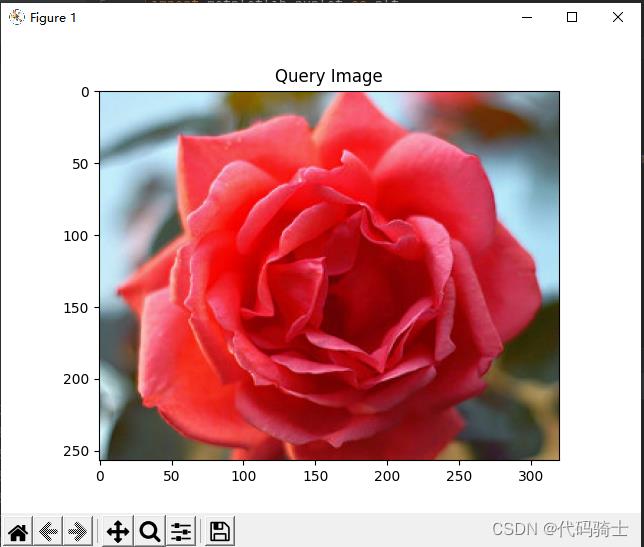
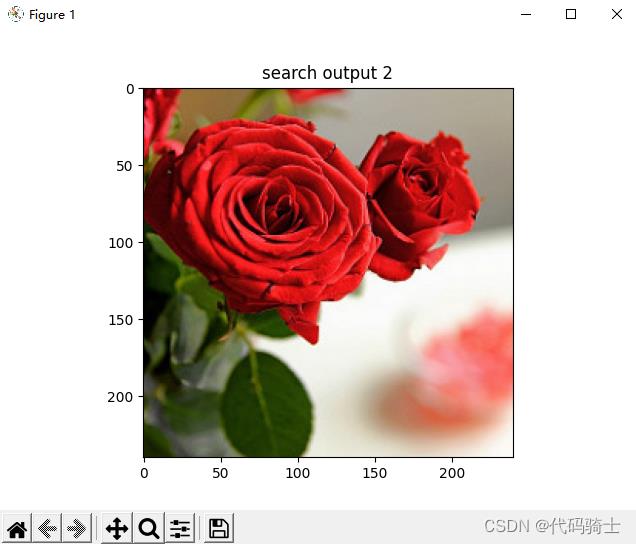

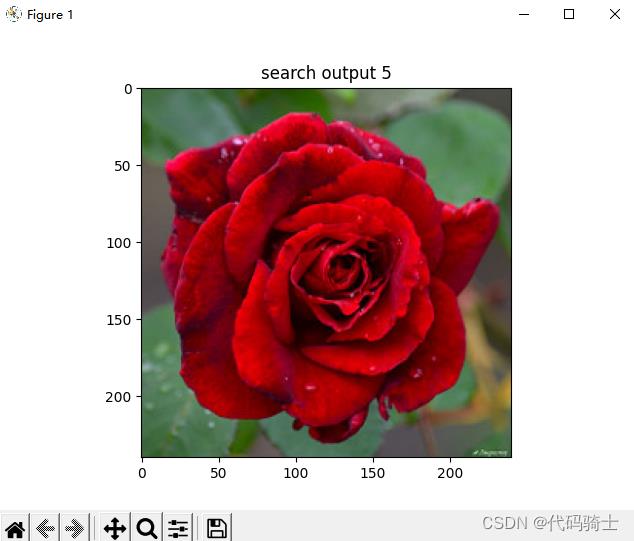
1、项目文件夹
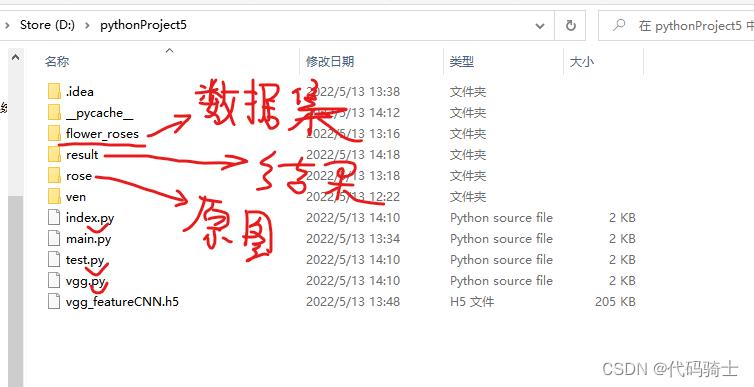 (1)数据集
(1)数据集
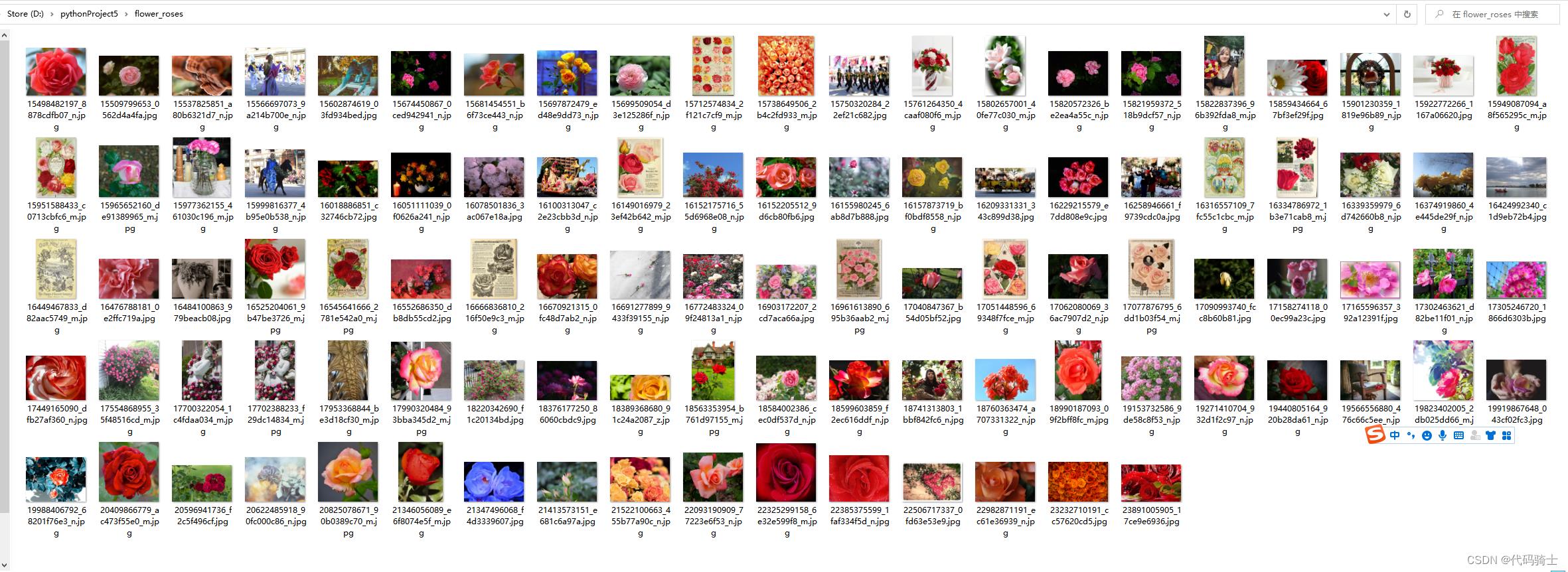
(2)结果(运行前)

(3)原图

2、相似度排序输出

3、保存结果

五、尾声
分享一个实用又简单的爬虫代码,搜图顶呱呱!
import os
import time
import requests
import re
def imgdata_set(save_path,word,epoch):
q=0 #停止爬取图片条件
a=0 #图片名称
while(True):
time.sleep(1)
url="https://image.baidu.com/search/flip?tn=baiduimage&ie=utf-8&word=&pn=&ct=&ic=0&lm=-1&width=0&height=0".format(word,q)
#word=需要搜索的名字
headers=
'User-Agent': 'Mozilla/5.0 (Windows NT 10.0; Win64; x64) AppleWebKit/537.36 (Khtml, like Gecko) Chrome/88.0.4324.96 Safari/537.36 Edg/88.0.705.56'
response=requests.get(url,headers=headers)
# print(response.request.headers)
html=response.text
# print(html)
urls=re.findall('"objURL":"(.*?)"',html)
# print(urls)
for url in urls:
print(a) #图片的名字
response = requests.get(url, headers=headers)
image=response.content
with open(os.path.join(save_path,".jpg".format(a)),'wb') as f:
f.write(image)
a=a+1
q=q+20
if (q/20)>=int(epoch):
break
if __name__=="__main__":
save_path = input('你想保存的路径:')
word = input('你想要下载什么图片?请输入:')
epoch = input('你想要下载几轮图片?请输入(一轮为60张左右图片):') # 需要迭代几次图片
imgdata_set(save_path, word, epoch)
参考资料:
(2条消息) 基于深度学习实现以图搜图功能_chenghaoy的博客-CSDN博客_深度学习以图搜图 https://blog.csdn.net/chenghaoy/article/details/84977406(2条消息) pytorch——VGG网络搭建_heart_6662的博客-CSDN博客_pytorch 搭建vgg
https://blog.csdn.net/chenghaoy/article/details/84977406(2条消息) pytorch——VGG网络搭建_heart_6662的博客-CSDN博客_pytorch 搭建vgg https://blog.csdn.net/qq_62932195/article/details/122416591
https://blog.csdn.net/qq_62932195/article/details/122416591
以上是关于机器学习入门实验——以图搜图( 基于vgg网络和Keras深度学习框架)的主要内容,如果未能解决你的问题,请参考以下文章